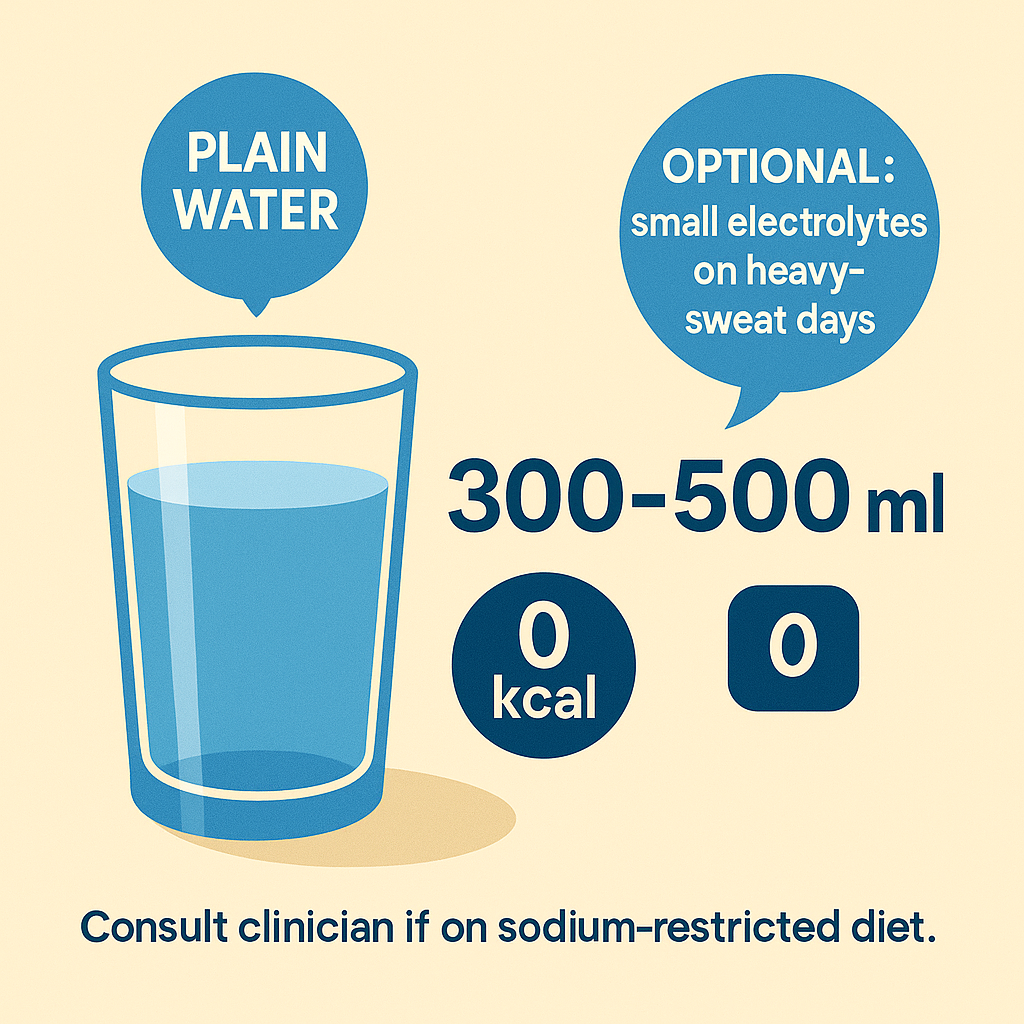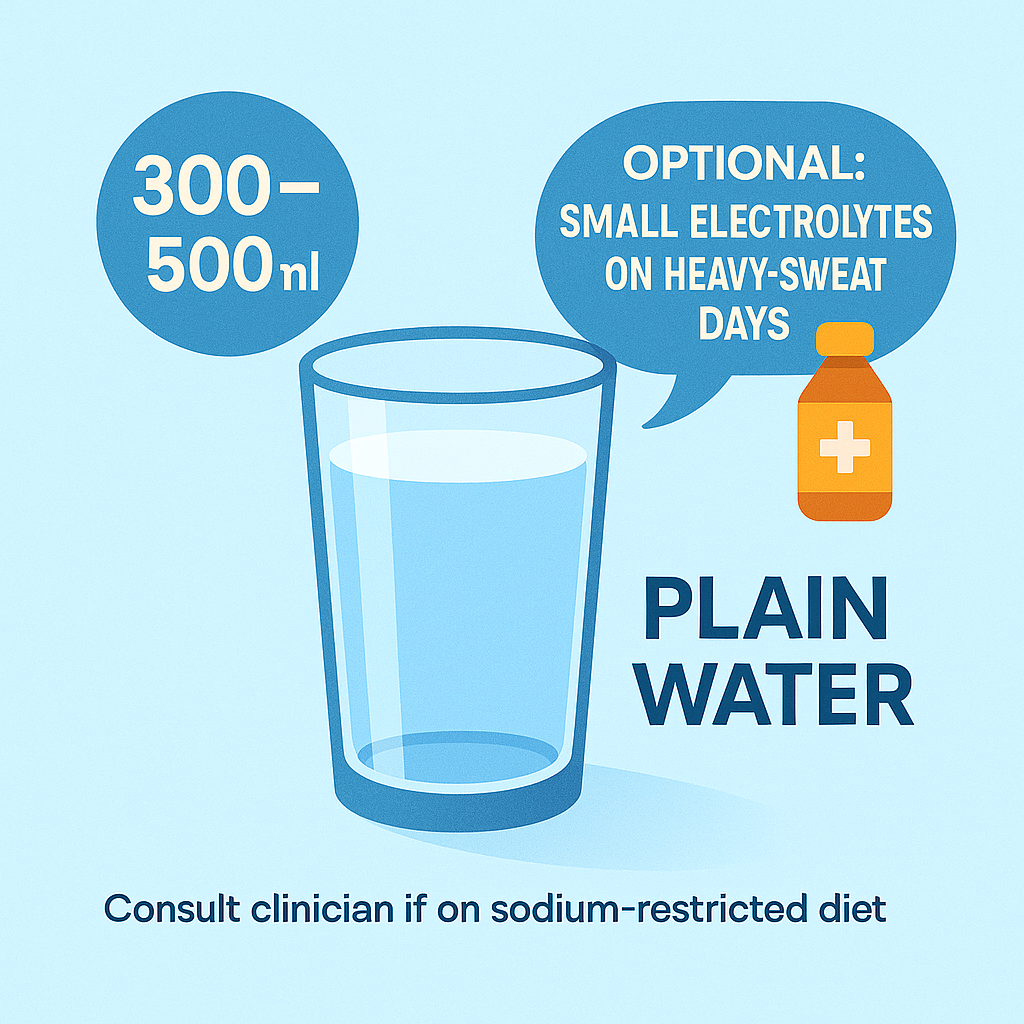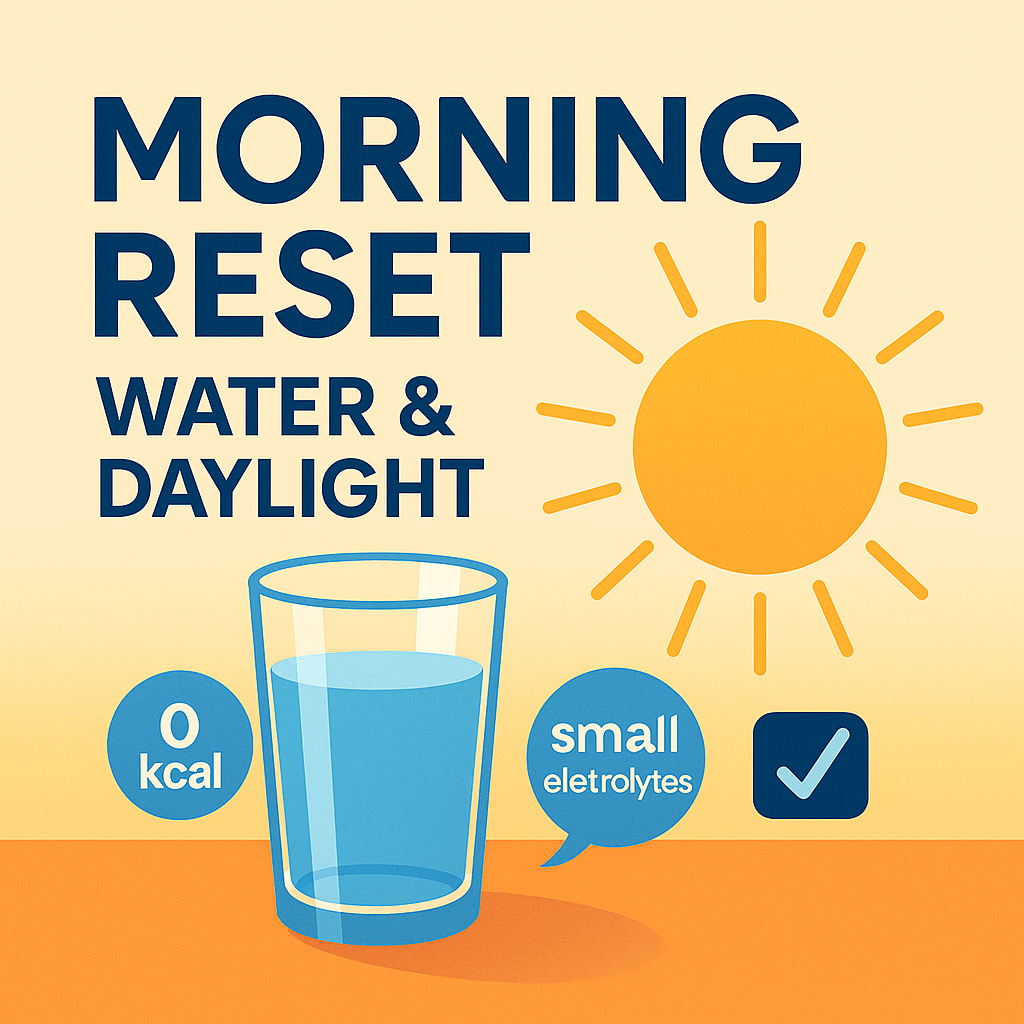Two Morning Habits That May Help Energy and Waistline—Without Gimmicks
No magic fixes—just two simple habits: (1) hydrate with zero-calorie fluids and (2) get brief outdoor morning light. Below you'll find what research supports, how to do it safely, and where hype can go too far.

1) Hydrate with Zero-Calorie Fluids for Better Energy (Plain Water First)
Why morning habits with water can help: Starting the day with fluids—without calories—keeps your overnight "fast" clean, which some people find useful for appetite control and metabolic flexibility. A widely cited review explains how time-restricted intake can promote a metabolic switch toward fat oxidation. See the NEJM review on intermittent fasting.
About salt in morning habits: Sodium is essential for fluid balance and neuromuscular function, but most adults already consume too much. Leading organizations advise staying under ~2,000–2,300 mg/day; many people with hypertension are encouraged to aim for ~1,500 mg/day. See WHO sodium guidance and the American Heart Association summary.
Affiliate disclosure: The product links below may be affiliate links; if you buy through them, I may earn a commission at no extra cost to you.


2) Get Brief Morning Daylight for Better Energy (Anchor Your Body Clock)

Why morning habits with daylight can help: Stepping outside within 1–2 hours of waking gives your eyes a strong light signal, helping set your circadian rhythm for better daytime alertness and nighttime sleepiness. A randomized trial showed morning bright light improved rest–activity patterns; see the morning bright-light RCT.
How to do morning habits with daylight (practical & safe)
- Go outside for 5–15 minutes in the morning (shade is fine; it's still brighter than indoors). Cloudy? Stay a little longer.
- Vitamin D note: For vitamin D, dermatology groups recommend meeting needs via food/supplements and using sun protection when you are in UV light. See the American Academy of Dermatology guidance.

Try the 3-Day Reset Plan for Morning Habits (No Perfection Needed)
- On waking: drink 300–500 ml of plain water. Add a small electrolyte amount only if you sweat heavily or your clinician recommends it.
- Within 1–2 hours of waking: get outside light for 5–15 minutes (hat/shade/sunscreen as needed).
- Breakfast timing: if you like a later first meal, keep it protein-forward with fiber and healthy fats. If you prefer an earlier breakfast, that's fine—consistency matters more than a single rule. For context on post-workout nutrition trade-offs, read our evidence-informed guide: 3 Post-Workout Foods to Rethink (With Better Swaps).

Read Next: More Morning Habits for Better Energy
References: Scientific Evidence for Morning Habits and Better Energy
Medical & Advertising Disclosures for Morning Habits Guide
Medical: This article is general information and not medical advice. If you have cardiovascular, kidney, endocrine, dermatologic, or mental-health conditions—or take prescription medicines—talk with your clinician before changing routines.
Affiliate: This post may include affiliate links (e.g., Amazon). If you purchase through them, I may earn a commission at no extra cost to you.
Pingback: Powell's Dovish Pivot at Jackson Hole 2025: 5 Key Market Insights & Bitcoin's 77% Rally Potential - trendbiteguide
Pingback: Cooking Oil Guide: 5 Toxic Oils to Avoid + 5 Healthy Alternatives for Better Health - trendbiteguide
Pingback: 3 Pervasive Myths About Salt: Why It Might Be Key to Your Health - trendbiteguide